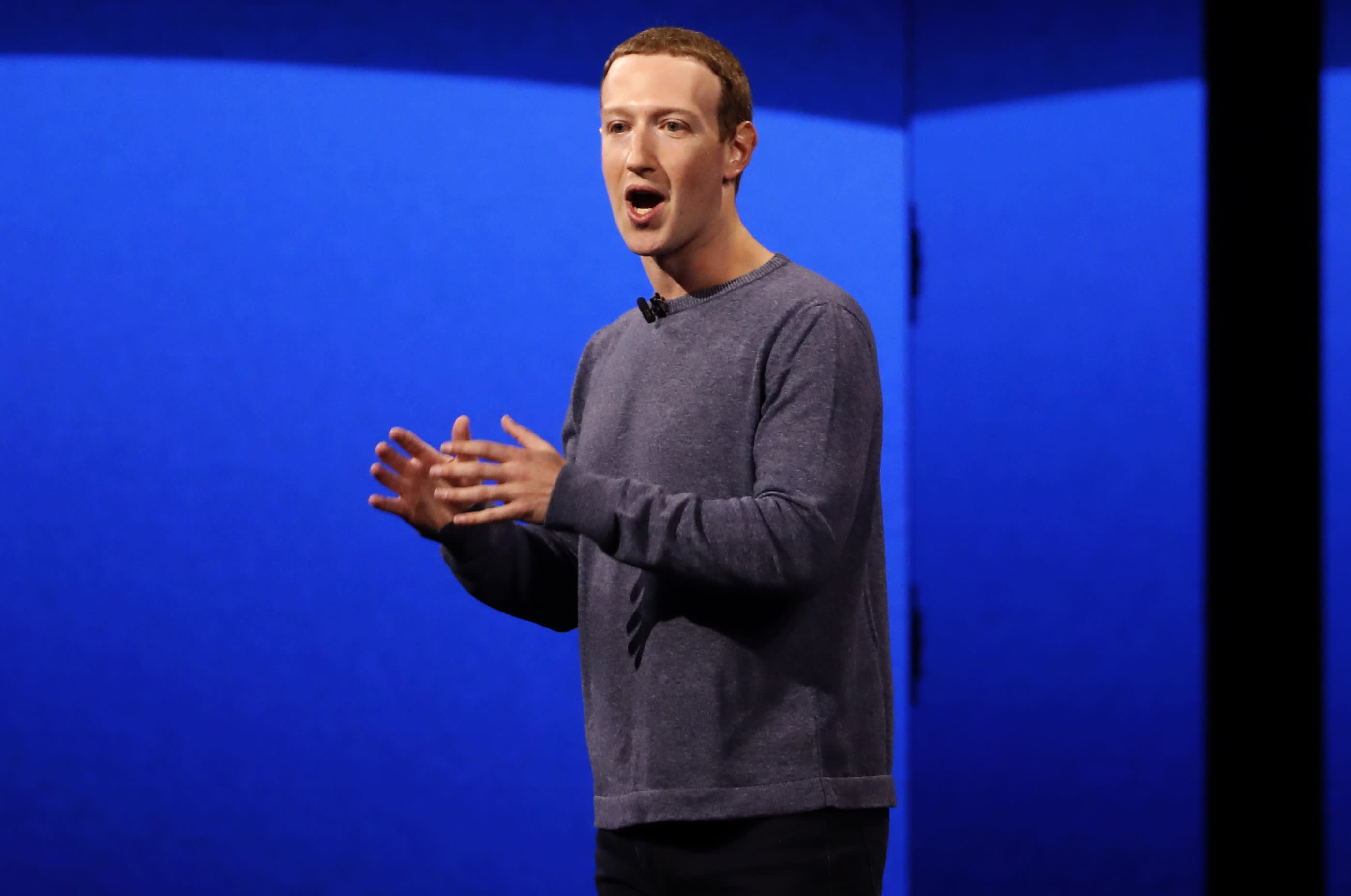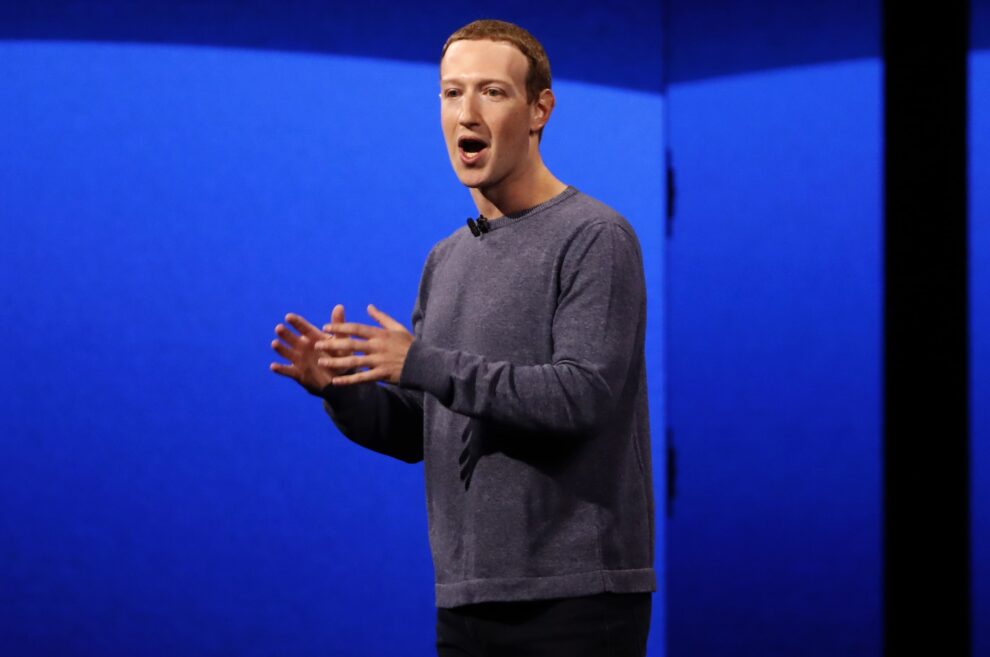
Facebook CEO Mark Zuckerberg makes his keynote speech during Facebook Inc’s annual F8 developers conference in San Jose, California, U.S., April 30, 2019.
Stephen Lam | Reuters
Big Tech’s third-quarter earnings showed digital ad revenue came roaring back in recent months, and suggested some of the digital ad trends tied to the explosion of e-commerce could be here to stay.
Alphabet, Facebook, Twitter and Amazon, which reported earnings Thursday after-hours, along with peers Snap and Pinterest, which reported earlier, showed strong digital advertising growth in the quarter as brand advertising started to rebound and sports made a return.
And though digital advertising has been on the rise for years, events of this year appear to be accelerating existing trends like e-commerce growth, as consumers get comfortable buying online out of necessity. And advertisers are following them online.
“In a world where we debate what structural changes will COVID bring… we believe one answer is clear: advertisers’ eagerness to spend/experiment on digital advertising has inflected,” Morgan Stanley analysts wrote in a Friday note. “The platforms with leading reach and ad offerings are set to capitalize and drive that shift into ’21 and beyond.”
Research firm MoffettNathanson added that the recovery in digital advertising is “so rapid and voluminous that many of the leading digital platforms are now exceeding the ad growth they posted” before the pandemic in the fourth quarter of 2019.
“In essence, history will likely show that the impact of COVID-19 and the attendant negative economic shocks depressed spending for only five months,” MoffetNathanson analysts wrote Friday. “We also strongly believe that history will show that 2020 will be seen as an inflection point for the industry as secular shifts in e-commerce, small to medium-sized business formation and declines in linear TV viewing accelerate the growth in digital ad spending.”
Here’s what happened in the ad businesses of Google, Facebook, Twitter and Amazon this quarter and what they mean for the digital ad market.
Facebook saw ad revenue in the quarter up 22% compared to a year ago, adding another million active advertisers in the quarter to reach 10 million. Morgan Stanley analysts said the broader trend of advertisers moving dollars online, along with Facebook’s reach and the efficacy of its ads, is why the business is “likely growing faster now than it was in January/February.”
As brand advertising continues to pick up and e-commerce accelerates for the holidays, that will likely mean continued acceleration for Facebook, Barclays analysts noted.
Some are hesitant around the potential reversal of the trends spurred by Covid-19. Needham analysts said Friday that Facebook benefited from higher usage per day amid global lockdowns, which results in more ad units Facebook can sell. That elevated usage may not continue as businesses like movie theatres and restaurants open.
But, as JPMorgan analysts pointed out, the Street may interpret Facebook’s comments about the uncertainties of 2021 as more cautionary.
“Investor concerns around the cautious tone for 2021 seem overdone given the easy comps [through] 2Q and FB’s history of such commentary,” Barclays analysts added Friday.
Google saw a strong advertising quarter. Its “search and other” category rebounded to 6% growth. YouTube ad revenue showed 32% growth as direct-response strength was joined by a return of brand advertising spend.
Credit Suisse analysts said Google was able to capitalize on the movement of more ad dollars online.
“As the pandemic accelerates the secular shift to online, Google has been looking to onboard merchants of all sizes with a series of products including Google My Business and free listings on Google Shopping – this along with tools to help start advertising in 15 minutes should help to convert these businesses to paying advertisers,” Credit Suisse analysts said.
Though the pandemic has hurt some traditional channels of advertising, Wedbush analysts said the shift to online disproportionately benefits Alphabet.
“We expect this shift to continue at least until there is a widely available vaccine, and even then, it is likely that many consumers who discovered online grocery shopping and online restaurant delivery will be converted to more frequent purchasers ahead,” they wrote. “In the near term, we anticipate increased consumer spending in ecommerce channels to continue to drive product and brand advertising increasingly online.”
Though Twitter’s ad revenue was up 15% in the quarter, driven by the return of sports and delayed events and product launches, many analysts saw the company as one of the weaker recovery stories in advertising.
The company, which has a stronger brand advertising business, said it will delay updates to its direct-response ad product next year. That means Twitter won’t yet be able to take advantage of a segment of the ad market that has remained stronger during the pandemic.
“The rising online ad market tide is likely to be a meaningful tailwind to TWTR in 4Q and ’21,” Morgan Stanley analysts wrote. “But in our view, TWTR needs to improve execution (and utilize its new ad infrastructure) to drive sustained stronger user retention and higher monetization.”
RBC analysts said they expected to see 22% year-over-year ad revenue growth in Q4. And it’s yet another example of the way advertisers are thinking differently about digital.
“Overall we view 3Q results as a positive indicator on strength of digital advertising market as offline businesses refocus on Online activity,” BofA Securities analysts wrote Friday.
Amazon
Amazon reported 51% year-over-year growth in its “other revenue” category, which includes advertising, as ad budgets improved from their second-quarter contraction.
“With increased online traffic, AMZN has turned that traffic into valuable real estate for advertisers, and in turn, had strong advertising performance in 3Q,” KeyBanc analysts wrote Thursday.
Analysts expected e-commerce advertising would ramp up even more heading into the holiday season in the fourth quarter, but noted that with higher competition for traffic from traditional retail, advertising costs could be higher.











Add Comment